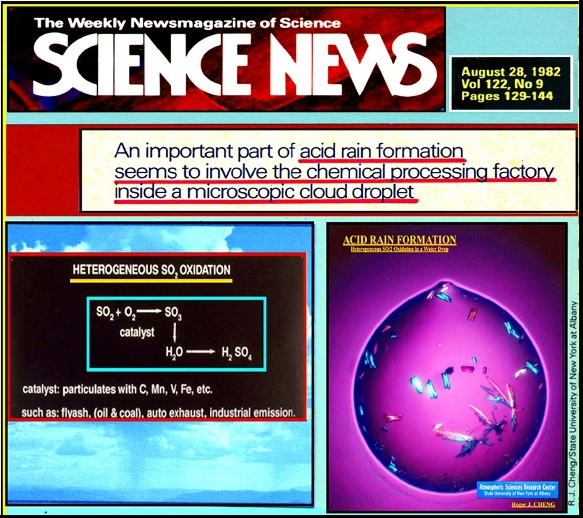Effect
of Graphitic Carbon on the
Albedo of Clouds
- Journal
of the Atmospheric Sciences
- Volume 41, Issue 21 (November
1984)
|
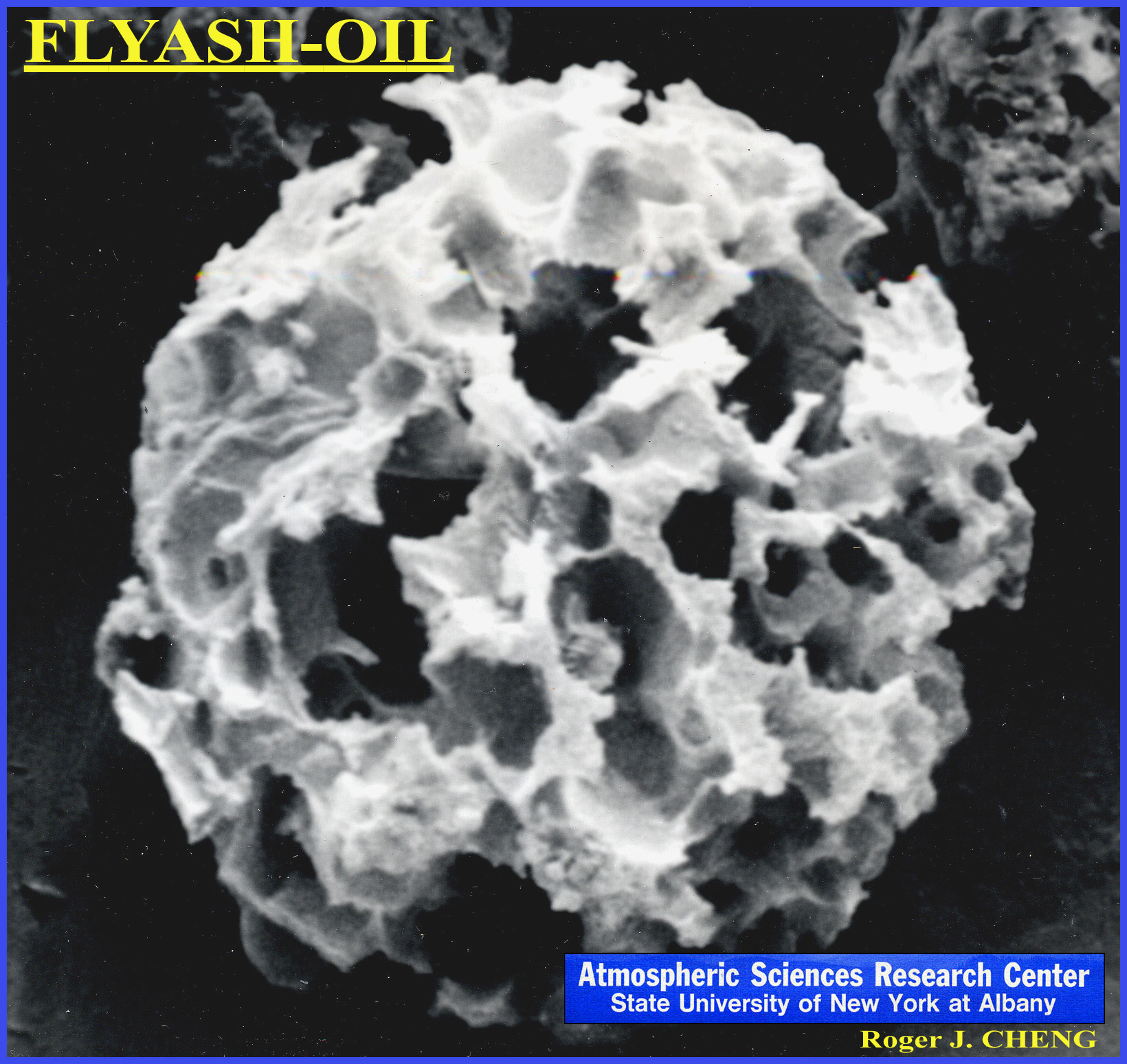 |
|
| Petr
Chýlek and V. Ramaswamy
National
Center for Atmospheric Research,
Boulder,
CO 80307 |
Roger
J. CHENG
Atmospheric
Sciences Research Center,
State
University of New York, |
|
ABSTRACT
We
examine the radioactive properties of clouds containing
submicron soot Particles as impurities. The soot particles
are assumed to be distributed Randomly inside water drops.
The refractive index of this inhomogeneous mixture is evaluated
using the mixing rule for a composite medium. Single and
multiple scattering properties are obtained using, respectively
the Mie theory and the Delta-Eddington approximation.
The
presence of soot enhances the visible light absorption in
clouds. A soot volume fraction of 7 × 10"6 in a model stratus
cloud increases the value of the single scattering co-albedo
from 10"7 (the value corresponding to that of pure water)
to 10"3. |
- Journal
of the Atmospheric Sciences
- Volume 41, Issue 21 (November
1984)
|
|
From Wikipedia, the free encyclopedi
|
Prior to becoming a government researcher in 2001, Chylek was a Professor at several US and Canadian universities
including SUNY
Albany, Purdue University, University of Oklahoma and
Dalhousie University
in Halifax, Canada.
Chylek has published over 100 first authored scientific papers in remote sensing, atmospheric radiation,
climate change, cloud and aerosol physics, applied laser physics and ice core analysis.
|
|
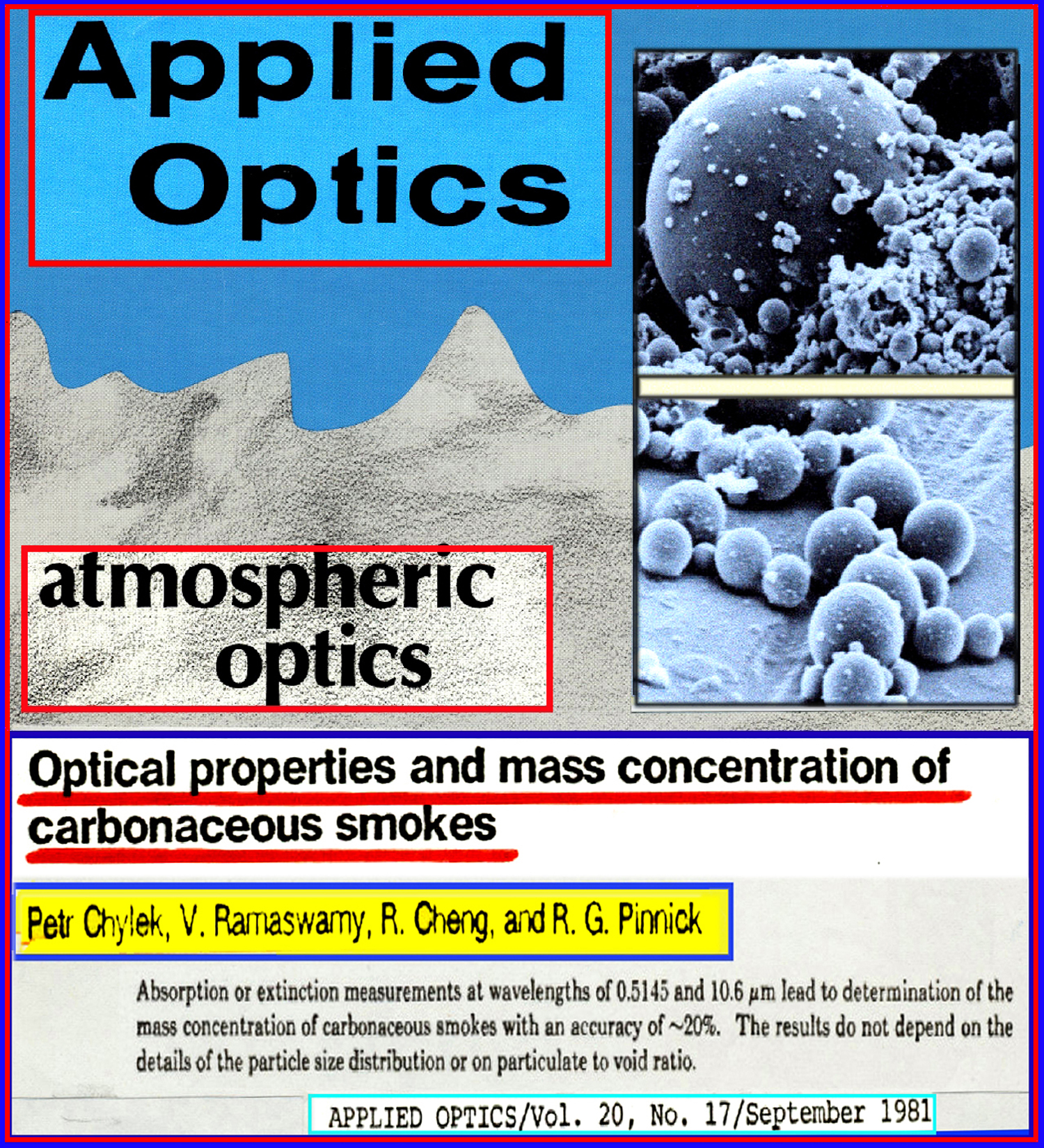 |
- Petr
Chylek and V. Ramaswamy
- Department
of Meteorology,
- Massachusetts
Institute of Technology,
- Cambridge,
Massachusetts
|
- Roger
J. Cheng
- Atmospheric Sciences Research
Center
- State University of New
York
- Albany, New York
|
|
ABSTRACT
Carbonaceous
smokes are produced by a variety of combustion sources
like chimney stack furnaces, industrial flames,
aircraft and rocket engines, all mote vehicles and
especially diesel engines. The soot formation results
from incomplete combustion of fuels containing carbon.
The carbonaceous particles contribute to local air
pollution of densely populated and industrial areas,
as well as to global pollution possibly affecting
the earth's climate. For these reasons there is
a need to measure and eventually routinely monitor
the mass concentration of these pollutants released
into the atmosphere. In this paper we propose a
simple method (based upon the extinction measurement
at two wavelengths) to determine accurately the
mass concentration of carbonaceous smokes |
- APPLIED
OPTICS
- VOL. 20, NO.
17--SEPT-1981
|
|
|
-
CATALYTIC
REACTIVITY
- of AIRBORNE
PARTICULATE MATERIAL
|

|
|
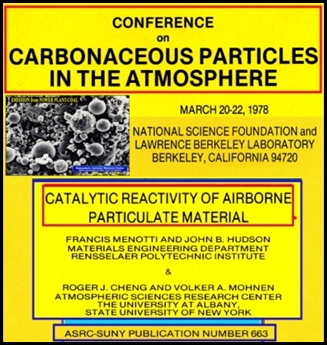
|
- RESEARCHERS from:
- RENSSELAR POLYTECHNIC
INSTITUTE
- and ASRC-SUNYA
INTRODUCTION
A
cooperative effort between research groups at the
Atmospheric Sciences Research Center of the State
University of New York and the Surface Studies Laboratory
at Rensselaer Polytechnic Institute is currently under
way. The ultimate aim of this effort is to assess
the role that heterogeneous catalysis of atmospheric
chemical reactions at the surface of airborne particulate
material plays in the overall turnover rate of pollutant
gases in the atmosphere. The approach to the problem
is twofold. On the one hand, atmospheric sampling
techniques are being used to collect airborne particulate
materials, such as those found in fossil fuel fired
power plant boilers. These particles are characterized
in terms of morphology, size distribution and chemical
composition both bulk and surface. Samples of these
particles are then prepared for chemical kinetic studies
in the molecular beam surface research system, to
be described below. In a concurrent study, samples
are being prepared to simulate those aspects of the
surface composition of the airborne particulates that
are felt to be of possible significance catalytically.
These samples, after characterization, are being exposed
to reactant gas mixtures in the molecular beam system.
A combination of mass spectrometric detection of desorbed
product fluxes and Auger electron spectrometric detection
of non-volatile surface products is being used to
characterize the rate and extent of the surface reaction.
It is hoped that this combination of techniques will
lead to unequivocal conclusions as to the rate-limiting
steps in the chemical reactions studied. In the work
to date, we have been investigating the overall reaction
SO/2 + O/2 +SO/3 + Sulfates at the surfaces of both
real stack particulate samples and laboratory- prepared
samples, prepared so as to simulate the surface composition
of the real particulates. The aim of the work is to
assess the role that catalytic reaction on particulate
surfaces plays in the turnover of SO/2 in power plant
plumes. The techniques used are applicable to a wide
range of reactions on a wide range of surfaces. The
aim of the present paper is as much to explain the
potentialities and limitations of the techniques employed
as to report results on the specific system studied
to date. |
|
-
CONF.
on CARBONACEOUS PARTICLES
-
in the ATMOSPHERE
-
NATIONAL SCIENCE
FOUNDATION and LAWERENCE BERKELEY LAB.
-
BERKELEY, CALIFORNIA--MARCH
1978
|
|
|
|
ARTICLES on INDUSTRIAL EMISSIONS
& CLIMATE CHANGE
ROGER J. CHENG: ASRC UNIVERSITYat ALBANY SUNYA
|
|
A JOURNEY
through MICROSCOPE
exploring
The UNSEEN
SECRETS of our ENVIRONMENT
|
|
|


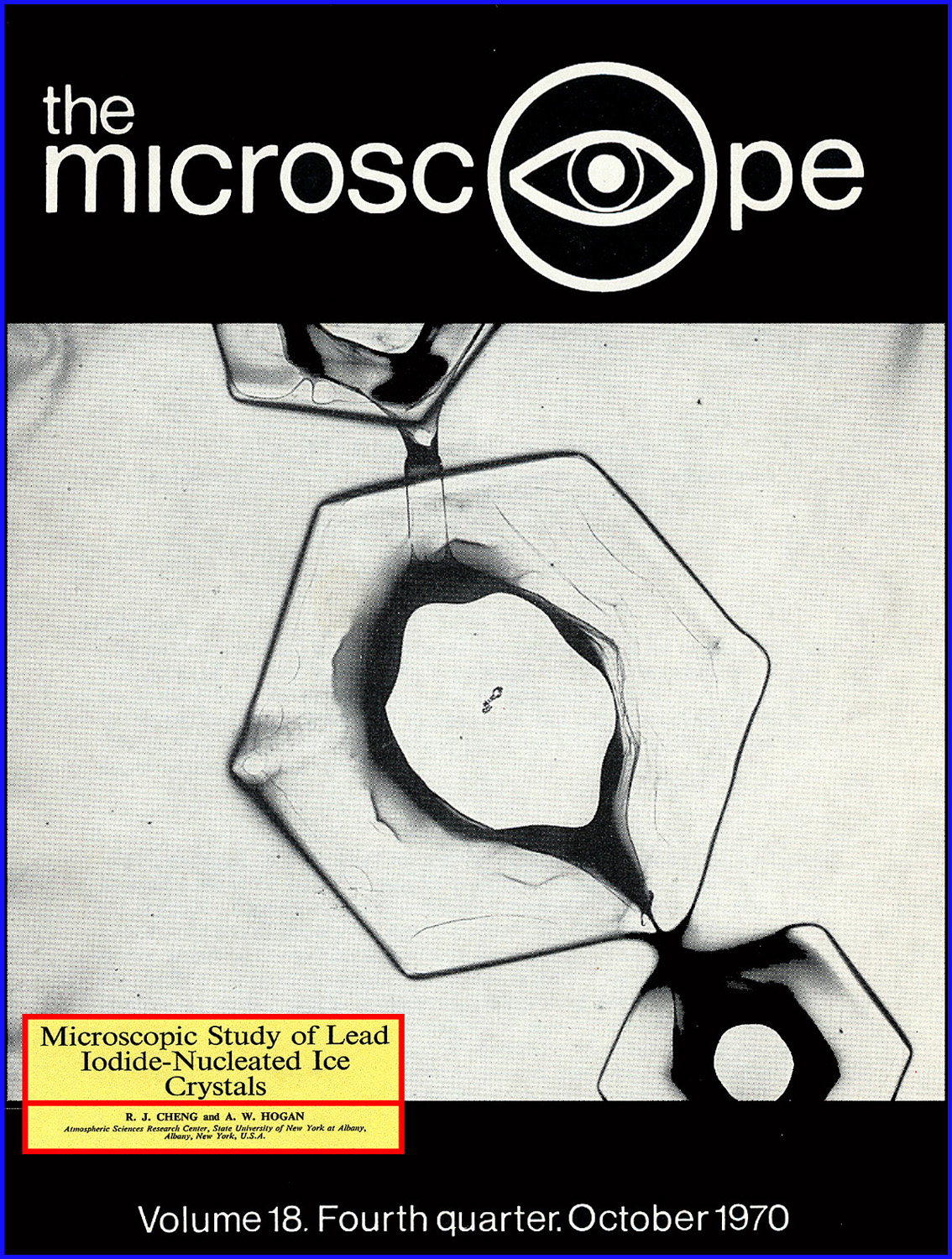
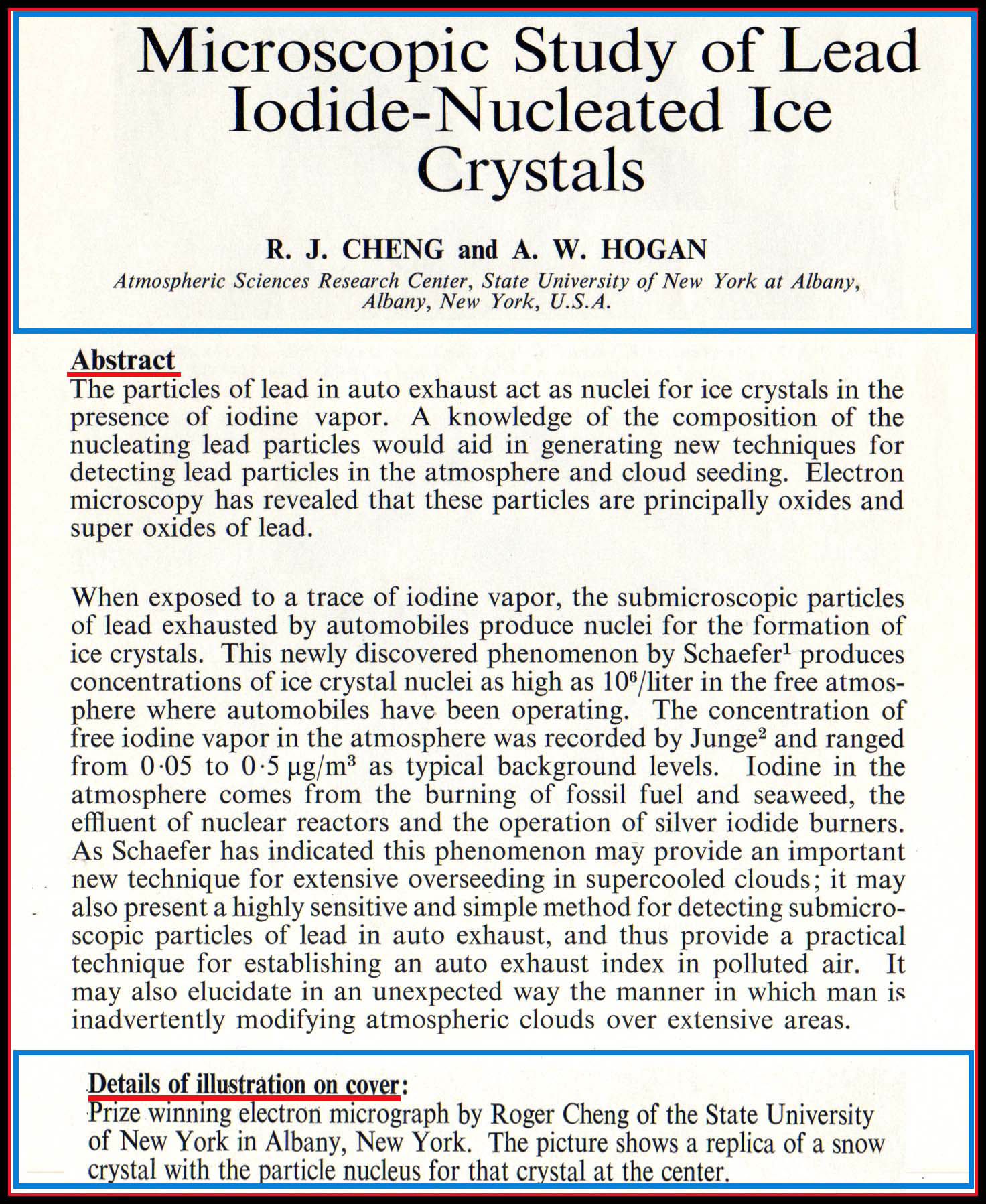
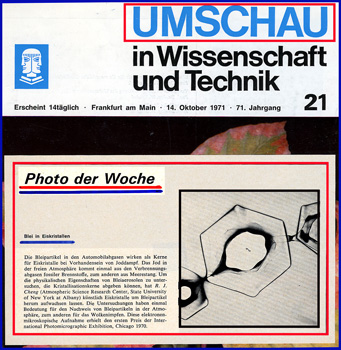



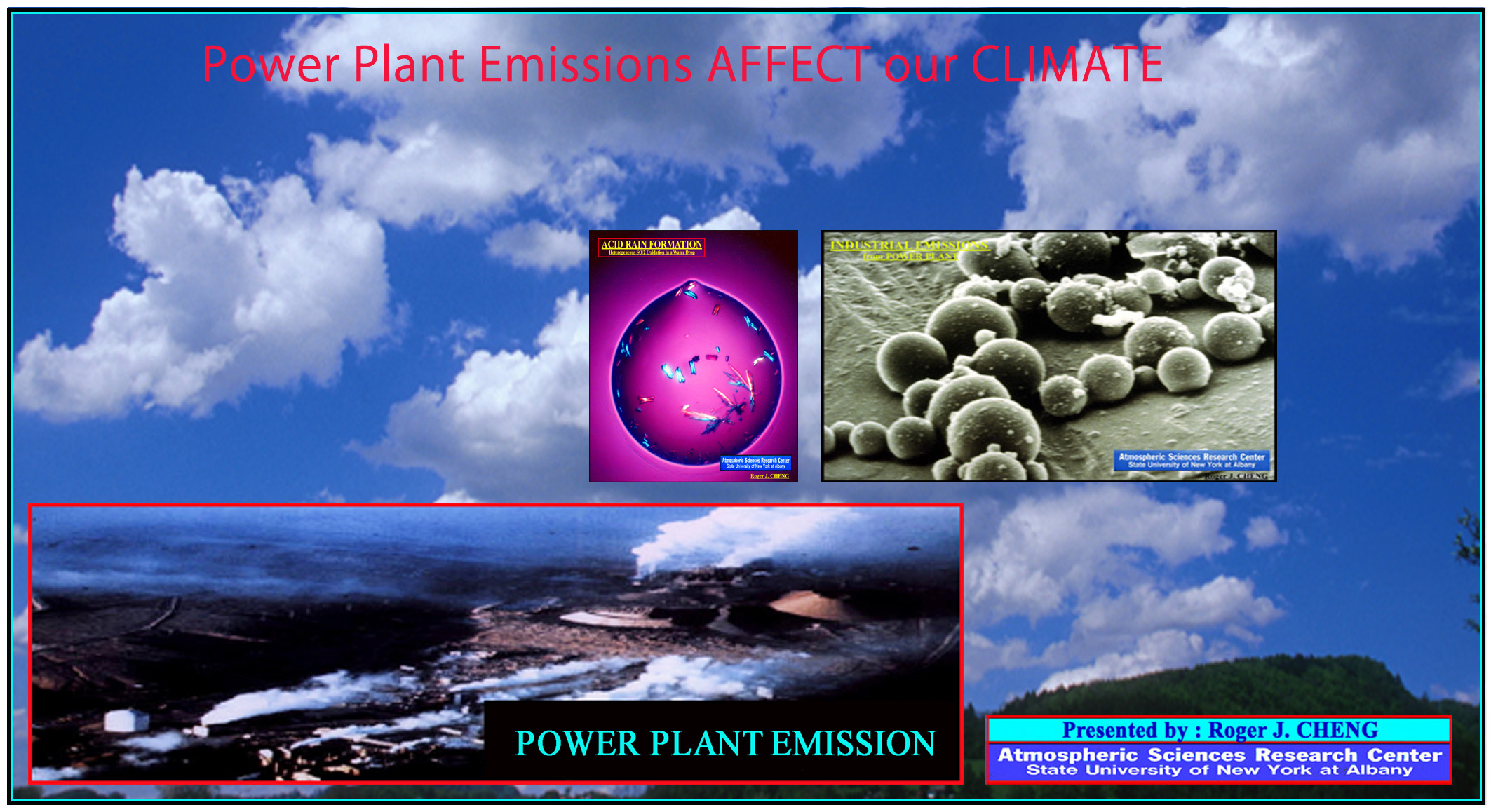
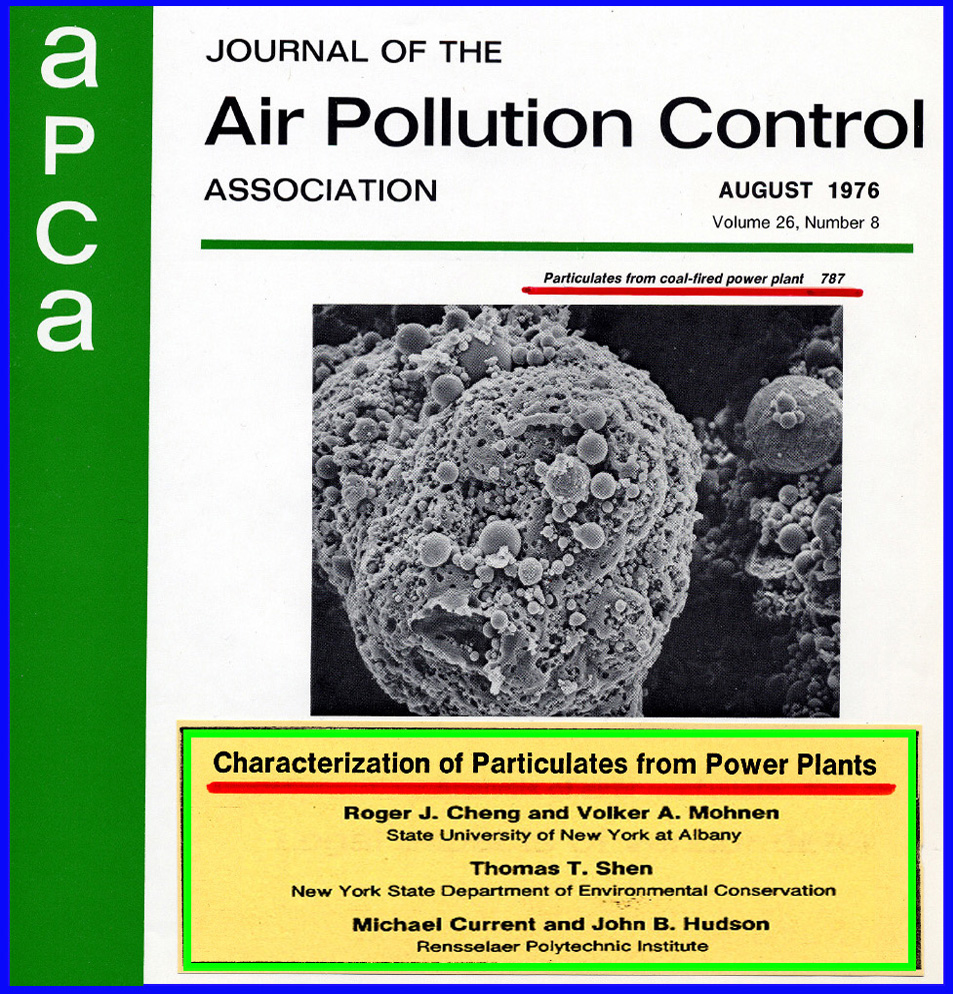
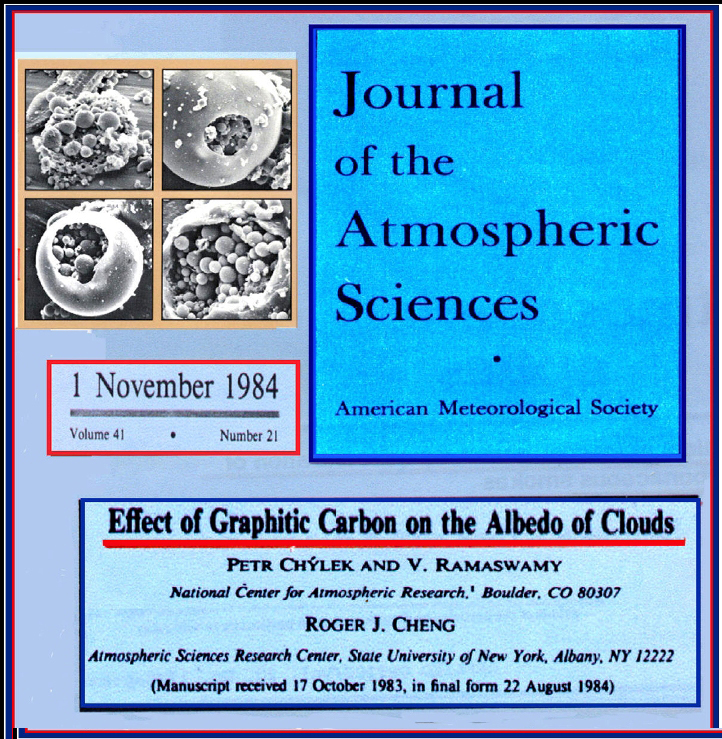
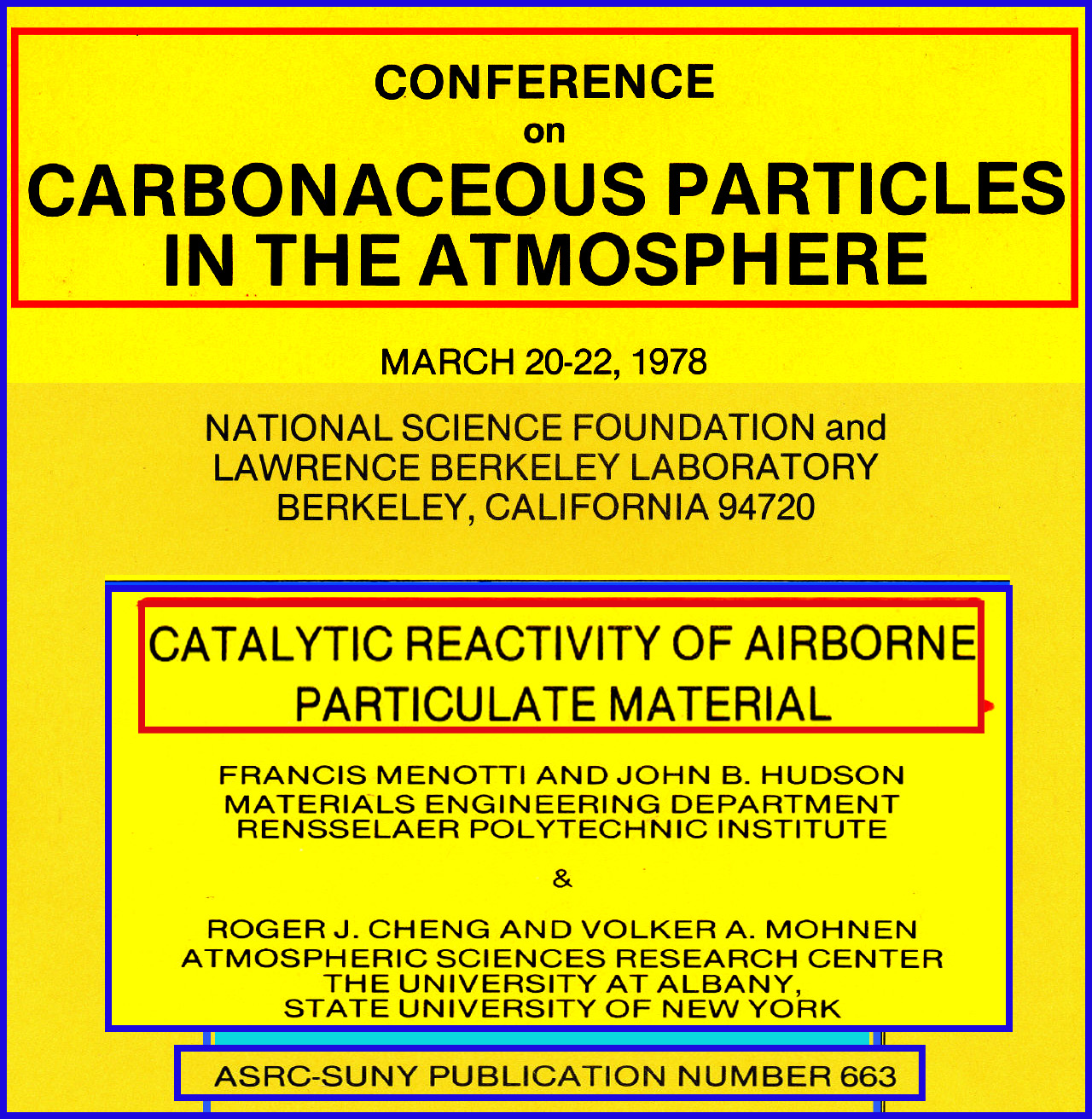
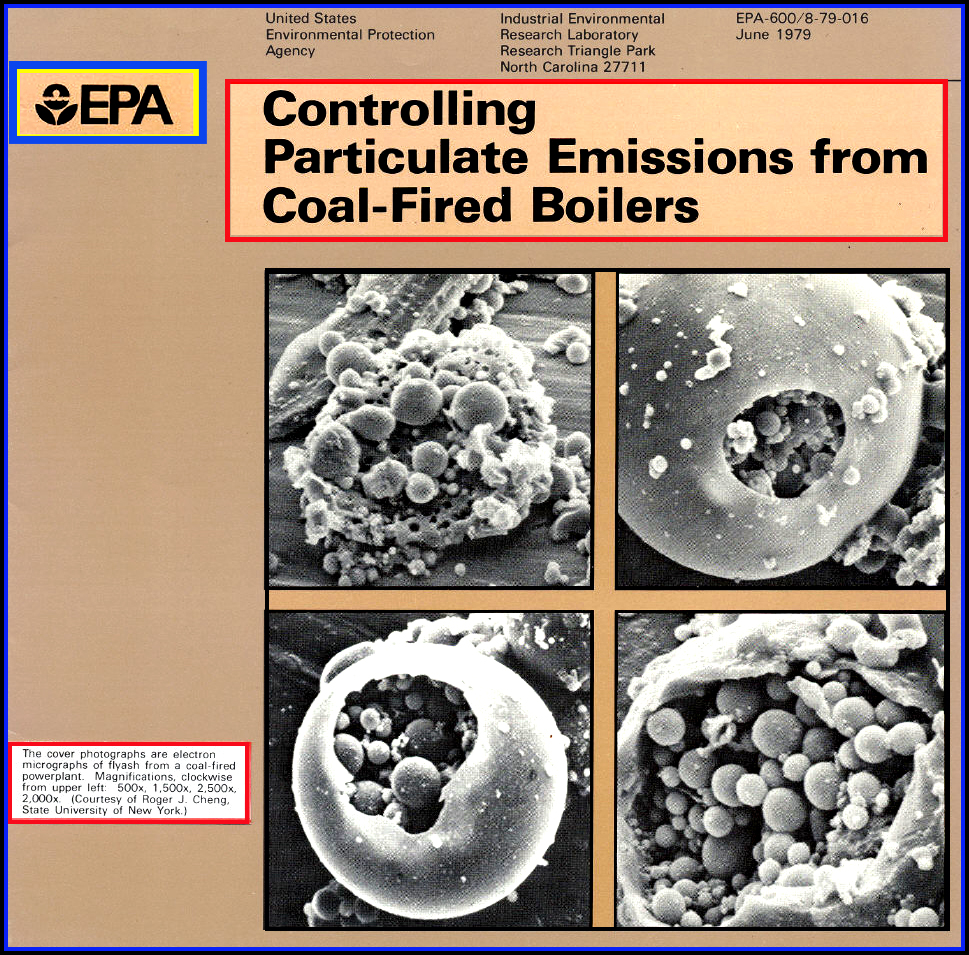
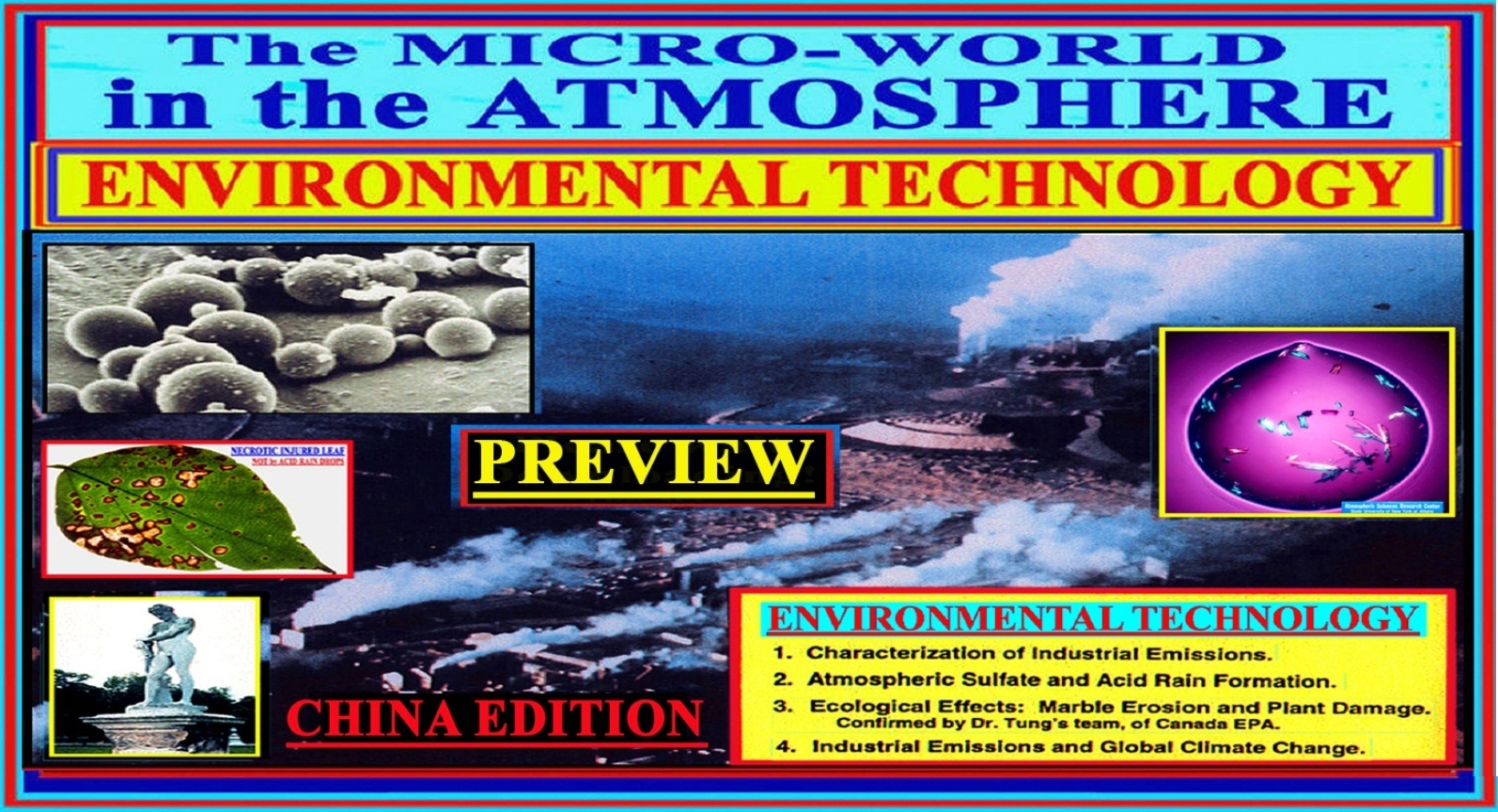








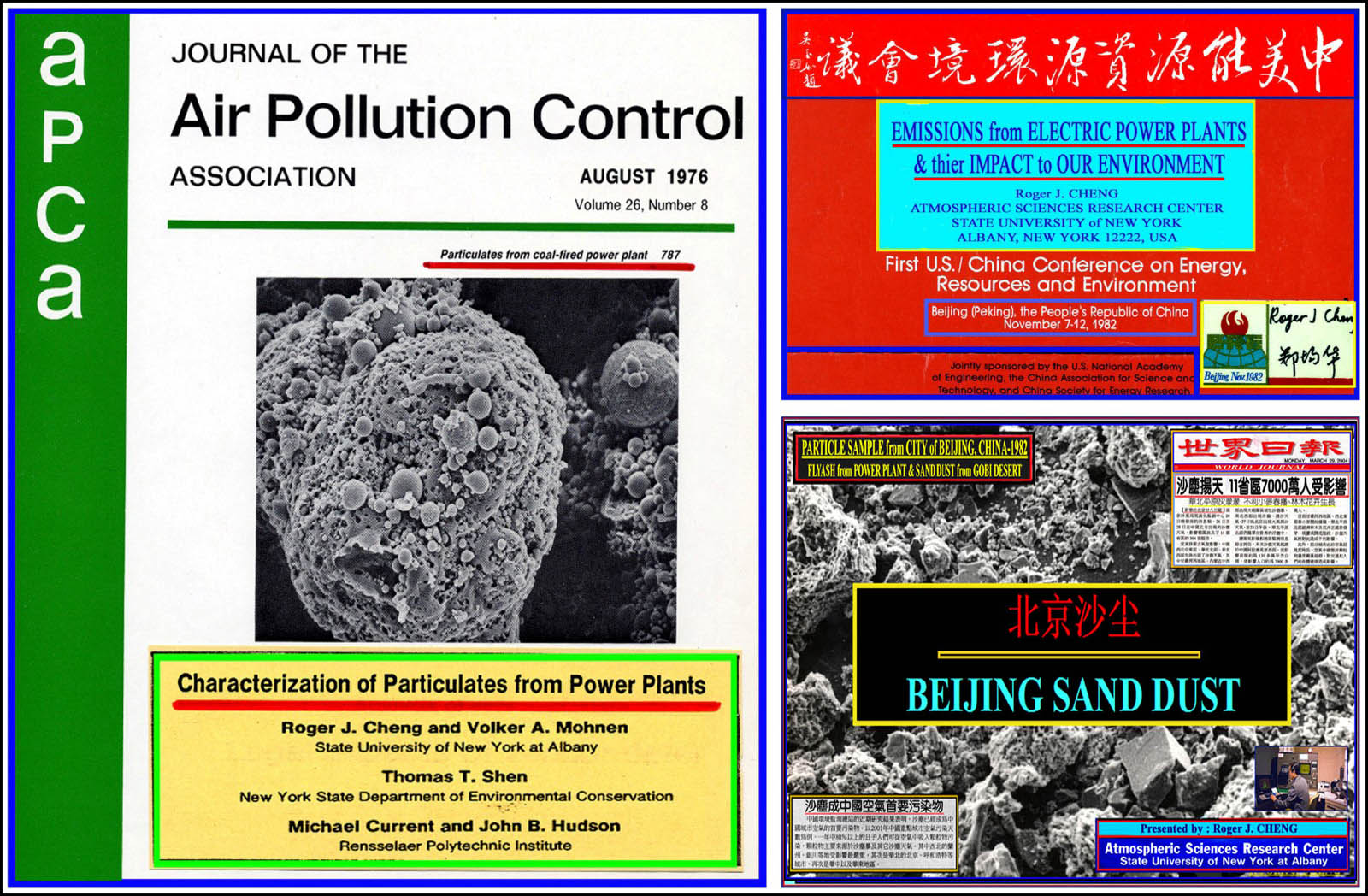

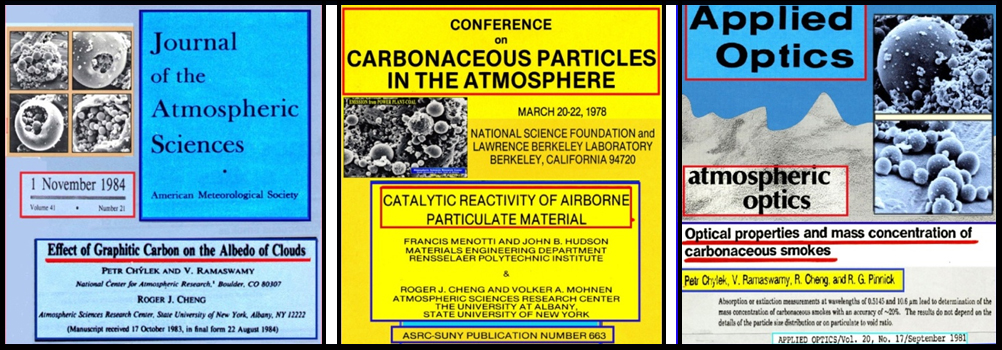
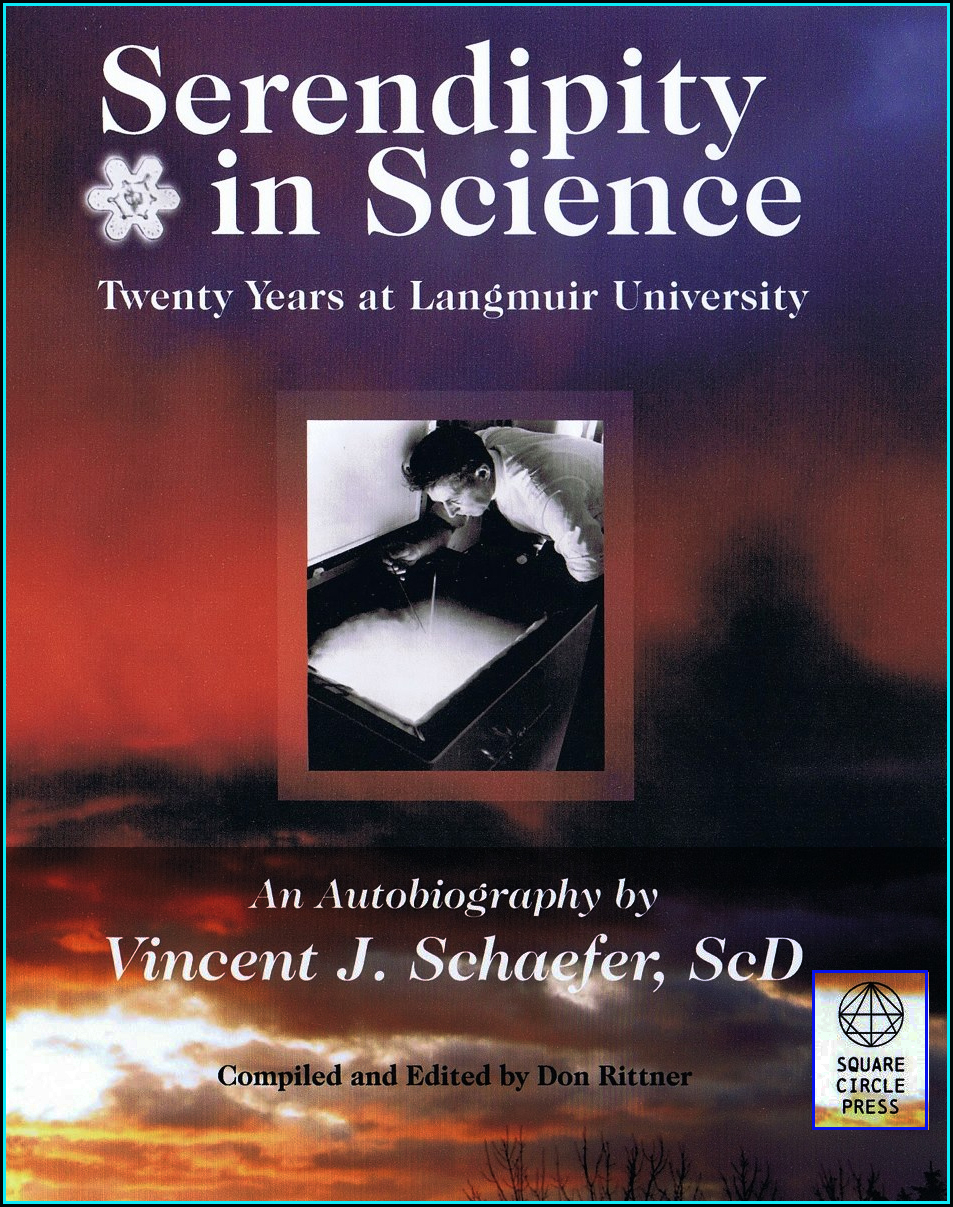
.png)



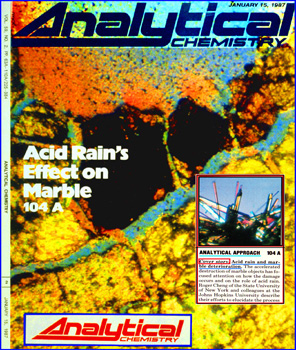
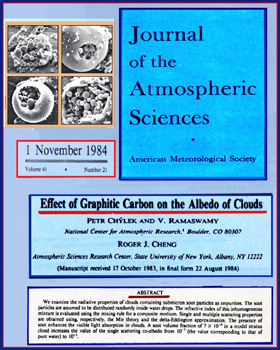

.jpg)




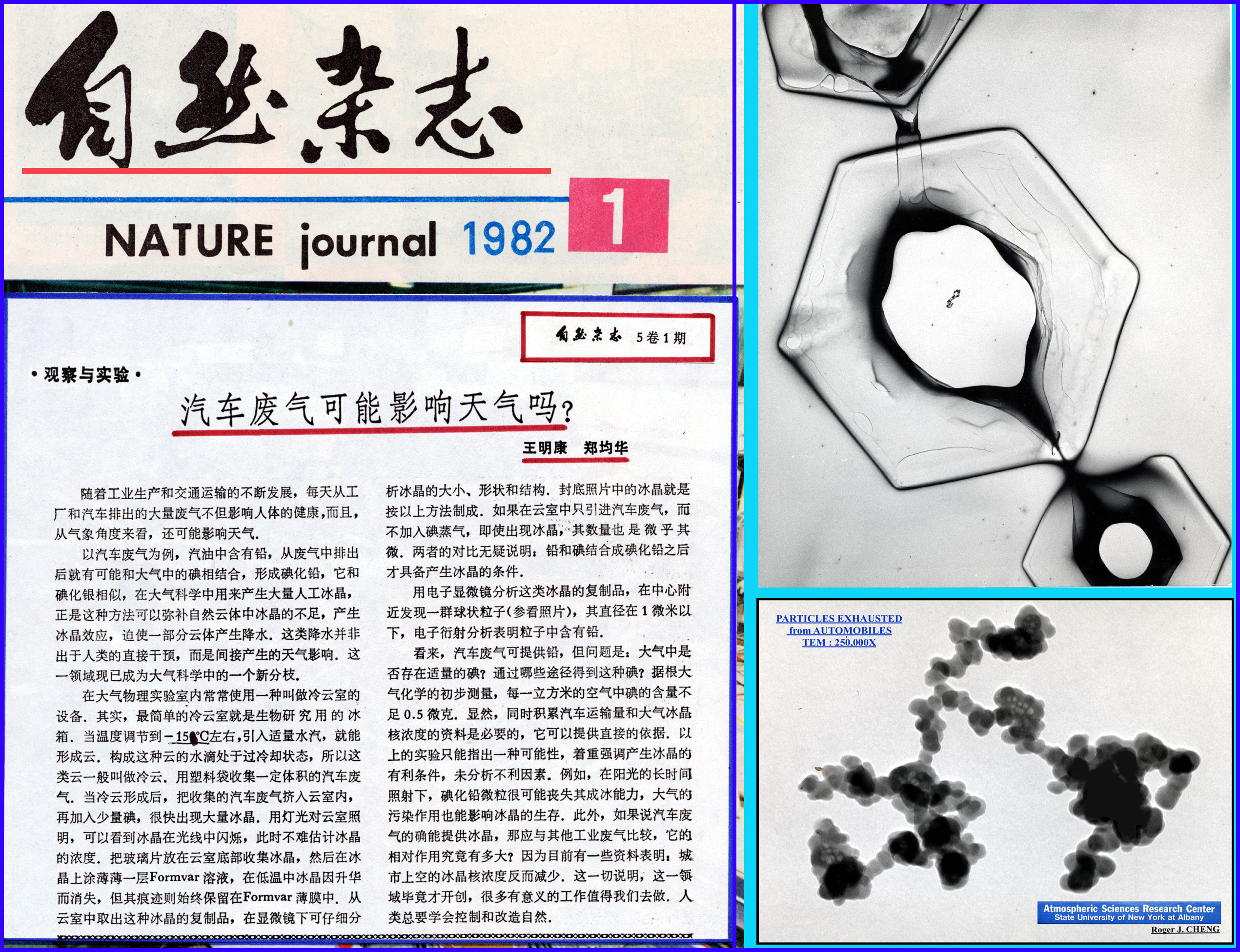

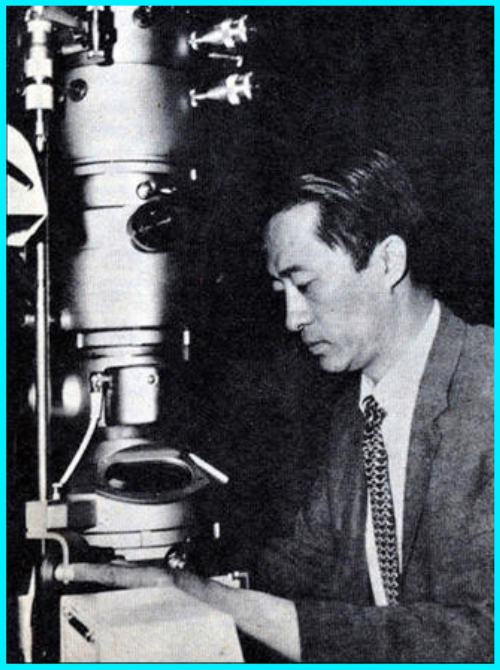
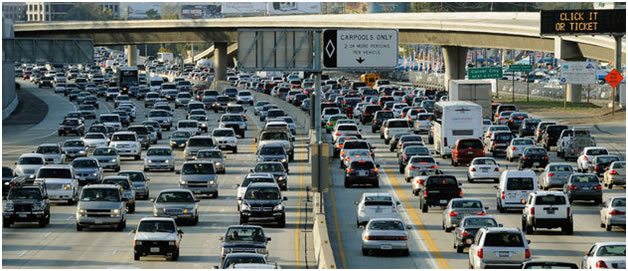


.jpg)




